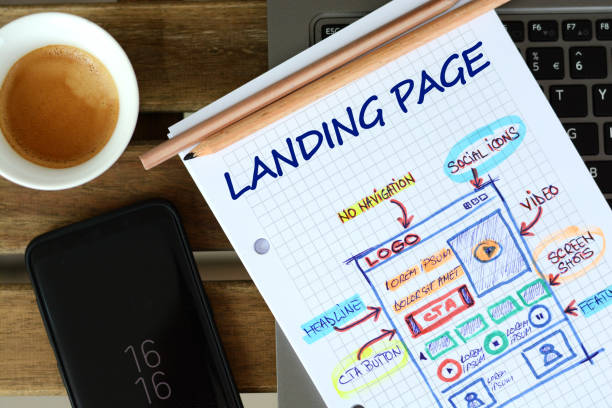In the world of digital marketing, landing pages play a crucial role in converting website visitors into leads or customers. An effective landing page design can significantly impact the success of your marketing campaigns. This blog post will explore the essential elements of landing page design that drive conversion optimization. By understanding and implementing these strategies, you can create landing pages that captivate your audience, encourage action, and ultimately boost your conversion rates.
Importance of Landing Page Design for Conversion Optimization
Effective landing page design is the cornerstone of conversion optimization. A well-designed landing page engages visitors, communicates your value proposition clearly, and guides them toward the desired action. By focusing on the design elements that enhance user experience, credibility, and persuasive messaging, you can create landing pages that maximize conversion rates and drive business growth.
Clear and Compelling Headline and Subheadline
The headline and subheadline of your landing page are critical for capturing visitors’ attention and conveying the value proposition. A compelling headline should be concise, benefit-oriented, and aligned with the campaign or offer. The subheadline can provide additional context and reinforce the primary message, compelling users to continue reading and taking the desired action.
Engaging Visual Elements and Layout
Effective landing page design incorporates visually appealing elements that engage visitors and create a positive user experience. This includes the use of high-quality images, relevant videos, intuitive layouts, and strategic use of white space. Visual elements should support the overall message and guide users’ attention toward the call-to-action (CTA) for maximum conversion impact.
Persuasive Copywriting and Compelling Call-to-Action (CTA)
Compelling copywriting is crucial for conveying the benefits, features, and value of your offer. Use persuasive language, highlight key selling points, and address potential objections. Additionally, create a clear and attention-grabbing call-to-action (CTA) that stands out on the page and clearly communicates the desired action. Make the CTA visually distinct and use action-oriented language to encourage visitors to take the next step.
Mobile Responsiveness and Page Load Speed
With the growing number of mobile users, optimizing landing pages for mobile devices is essential. Ensure your landing page design is mobile responsive, providing a seamless and engaging experience across different screen sizes. Additionally, prioritize optimizing page load speed, as slow-loading pages can significantly impact user experience and conversion rates.
Frequently Asked Questions
How can I test and optimize my landing page design for better conversion rates?
Answer: A/B testing is a valuable technique to optimize your landing page design. Create multiple variations of your landing page, each with a specific element or layout change, and split your traffic between them. Measure and compare the conversion rates to identify the design elements that resonate best with your audience. Continuously iterate and refine your landing page design based on the insights gained from A/B testing.
What are some best practices for incorporating trust elements into landing page design?
Answer: Trust elements are crucial for building credibility and instilling confidence in your visitors. Include trust badges, customer testimonials, client logos, security seals, and social proof indicators on your landing page. Display any relevant certifications, awards, or affiliations to establish credibility. Ensure your landing page design reflects professionalism and authenticity to foster trust and increase conversion rates.
Should I use long or short-form landing pages for better conversions?
Answer: The length of your landing page should be determined by the complexity of your offer and the information needed to persuade visitors. In some cases, a shorter landing page with concise information and a strong call to action can be effective. However, for more complex offers, long-form landing pages that provide comprehensive details, benefits, and testimonials may be necessary. Test both approaches to determine what works best for your specific audience and offer.
How can I improve the overall user experience on my landing page?
Answer: To enhance user experience, ensure your landing page loads quickly, has a clean and uncluttered layout, and is easy to navigate. Optimize the use of headings, bullet points, and white space for readability. Streamline the form fields and keep them to a minimum to reduce friction. Test the page on different devices and browsers to ensure a consistent experience. Incorporate clear instructions and visual cues to guide visitors through the page.
Read More About Website Security Best Practices: Safeguarding User Data and Preventing Cyber Threats
Conclusion
Effective landing page design is a critical component of conversion optimization. By focusing on clear and compelling headlines, engaging visual elements, persuasive copywriting, and seamless mobile responsiveness, you can create landing pages that capture attention, inspire action, and drive higher conversion rates. Continuously test, analyze, and optimize your landing page design to maximize its effectiveness and achieve your marketing goals. Remember, an optimized landing page can significantly impact the success of your campaigns and contribute to your overall business growth.


